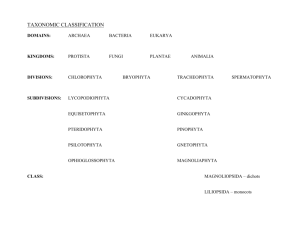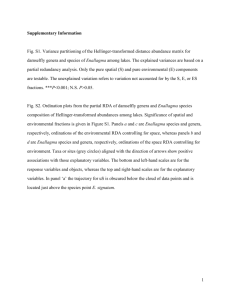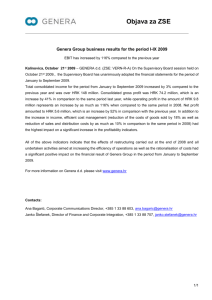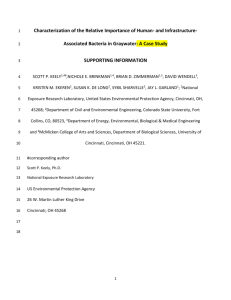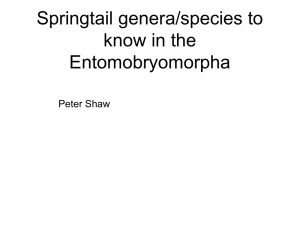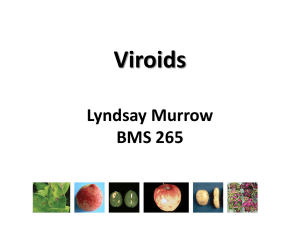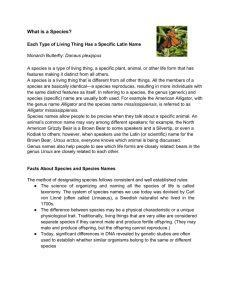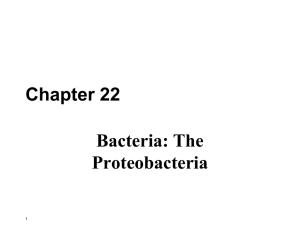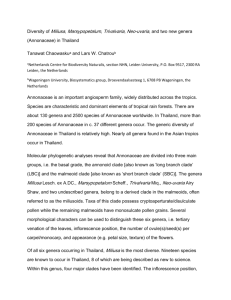Supplemental Material Figure S1. Schematic representation of the
advertisement
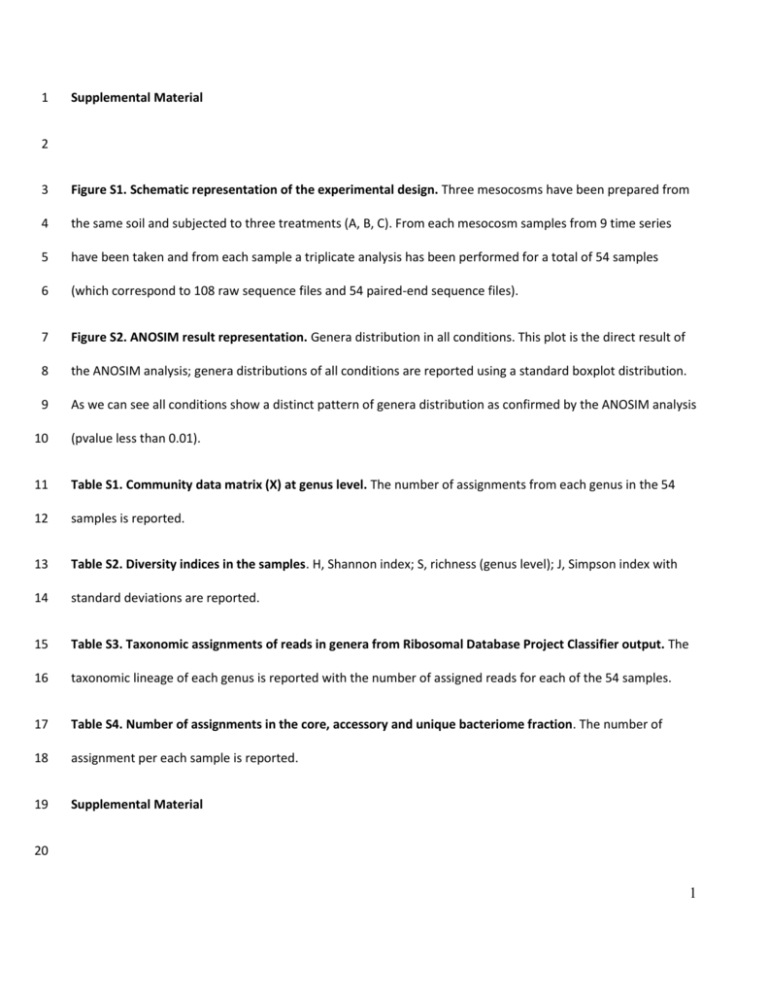
1 Supplemental Material 2 3 Figure S1. Schematic representation of the experimental design. Three mesocosms have been prepared from 4 the same soil and subjected to three treatments (A, B, C). From each mesocosm samples from 9 time series 5 have been taken and from each sample a triplicate analysis has been performed for a total of 54 samples 6 (which correspond to 108 raw sequence files and 54 paired-end sequence files). 7 Figure S2. ANOSIM result representation. Genera distribution in all conditions. This plot is the direct result of 8 the ANOSIM analysis; genera distributions of all conditions are reported using a standard boxplot distribution. 9 As we can see all conditions show a distinct pattern of genera distribution as confirmed by the ANOSIM analysis 10 (pvalue less than 0.01). 11 Table S1. Community data matrix (X) at genus level. The number of assignments from each genus in the 54 12 samples is reported. 13 Table S2. Diversity indices in the samples. H, Shannon index; S, richness (genus level); J, Simpson index with 14 standard deviations are reported. 15 Table S3. Taxonomic assignments of reads in genera from Ribosomal Database Project Classifier output. The 16 taxonomic lineage of each genus is reported with the number of assigned reads for each of the 54 samples. 17 Table S4. Number of assignments in the core, accessory and unique bacteriome fraction. The number of 18 assignment per each sample is reported. 19 Supplemental Material 20 1 21 Figure S1. Schematic representation of the experimental design. Three mesocosms have been prepared from 22 the same soil and subjected to three treatments (A, B, C). From each mesocosm samples from 9 time series 23 have been taken and from each sample a triplicate analysis has been performed for a total of 54 samples 24 (which correspond to 108 raw sequence files and 54 paired-end sequence files). 25 Figure S2. ANOSIM result representation. Genera distribution in all conditions. This plot is the direct result of 26 the ANOSIM analysis; genera distributions of all conditions are reported using a standard boxplot distribution. 27 As we can see all conditions show a distinct pattern of genera distribution as confirmed by the ANOSIM analysis 28 (pvalue less than 0.01). 29 Table S1. Community data matrix (X) at genus level. The number of assignments from each genus in the 54 30 samples is reported. 31 Table S2. Diversity indices in the samples. H, Shannon index; S, richness (genus level); J, Simpson index with 32 standard deviations are reported. 33 Table S3. Taxonomic assignments of reads in genera from Ribosomal Database Project Classifier output. The 34 taxonomic lineage of each genus is reported with the number of assigned reads for each of the 54 samples. 35 Table S4. Number of assignments in the core, accessory and unique bacteriome fraction. The number of 36 assignment per each sample is reported. 37 2
